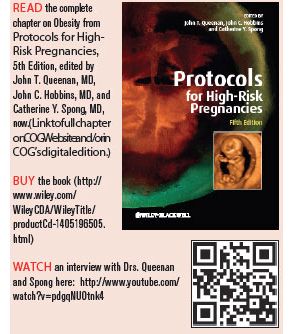Snapshot
In this protocol, Dr, Sibai reviews the pathophysiology, diagnosis, and management of preeclampsia. Included are algorithms for management of mild hypertension-preeclampsia and severe preeclampsia.

As the author notes, women who develop preeclampsia in their first pregnancy are at increased risk (20%) for development of preeclampsia in subsequent pregnancies. With severe disease in a first pregnancy, the risk of recurrence is about 30%. With severe disease presenting in the second trimester, the risk of recurrent preeclampsia is 50%. There is an increased risk of chronic hypertension and undiagnosed renal disease, especially in patients with two episodes of severe preeclampsia in the second trimester. These patients should have adequate medical evaluation postpartum. There is also increased risk of intrauterine growth restriction in a subsequent pregnancy.
KEY MESSAGES:
Baha M. Sibai, MD University of Cincinnati College of Medicine, Ohio
